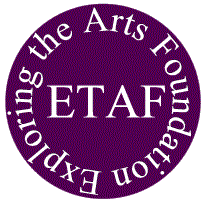|
| ||||||||||||||||||||||||||||
|
||||||||||||||||||||||||||||
|
|
||||||||||||||||||||||||||||
why establish literary periods?Some examples of the kinds of literary entities that can be explored more easily when classified by time, place, and milieu:
ways in which classification helpsHow can classification by the dimension of time facilitate an exploration of literature? Time can be a valuable way to classify literature because literature does not exist in a vacuum. Contemporary culture, society, nationality, geography, religion, climate, political movements, and a host of other such factors—factors that are external to literature—can affect authors and the literature they produce. Likewise, contemporaneous authors, works, and the world of literature as a whole can each other as well as the society in which they exist. Insofar as contemporaneous cultures, societies, and literatures are interrelated, they may take on similar characteristics. These common characteristics tend to be specific to their time; they mark them as unique, special, and different from other cultures, societies, and literatures. Examination of such characteristics can produce illuminating comparisons with the cultures, societies, and literatures of the same or other times and places. As with cultures and societies, literatures also tend to affect and reflect their environments. As a result, they tend to assimilate the special and unique characteristics of the culture, society, authors, works, and other literatures in which and with which they coexist. Coexisting, contemporaneous authors and bodies of literature often share common characteristics or differ from each other in revealing ways. Comparing distinguishing characteristics between the literature of one period and that of another period can be especially illuminating. Just as there can be a Zeitgeist or spirit of the time that marks the general trend in thought or feeling that is characteristic of a particular period or era, so there can be a zeitgeist that marks the literature of a particular period. Knowing the period in which a literary work is written immediately links the work to its milieu. A reader's understanding a work's milieu, gained from a variety of prior experiences, allows a reader to perceive more of a work's meaning and significance when it's read. Armed with this kind of knowledge, readers can better
| ||||||||||||||||||||||||||||
|
| ||||||||||||||||||||||||||||
Search this web site with Electricka's Search Tool:
tap or click here
Electricka's Theme Products
Shop At Cafe Press
This web site and
its contents are copyrighted by
Decision Consulting Incorporated (DCI).
All rights reserved. | ||||||||||||||||||||||||||||



